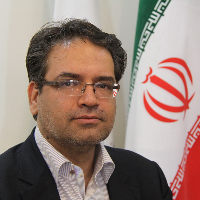Strategies to Promote the Environmental Quality of Informal Settlements Based on Participatory Approach, Case Study: Hesar in Hamedan
Author(s):
Abstract:
Introduction
By the rise of new industrial and technological age, modern industries and services developed mainly in large cities and these cities absorbed massive flows of migrants from towns and villages. This trend caused population growth more thanthe existingservice capacities and,thus, the environmental qualitiesof the cities were gradually undermined. Continuing this situation for some decades became the motive for low-incomes and migrants to face with difficulties in meeting their basic needs. This trend that is partially controlled in developed countries by some policies like regional planning aimed to manage the allocation of population and facilities in the region and promote the environmental quality, now is a challenge in the developing countries.This is specially the case in Iran as a developing country in which considerable migrations to metropolitan areas have resulted in the rise of informal areas with low-income and migrant dwellers. The main problems here are in spatial structure, visual quality and provision of basic services and facilities. Hence, its quite important to think about development ofthese areas environmentally. These problems along withnegative impacts on the quality of life causeseveral social and cultural disorders. The low quality of housing, not enough access to basic services, the lack of public places and suitable streets are some of the problems which affect the quality of environment in informal areas. In addition, these settlements are differentfromeach other economically, socially, culturally and in many other aspects that requires specific pattern of planning and policy making for each of them. In this way, because of the undeniable costs for dealing with environmental problems, its quite required to pay enough attention to determine priorities and the best solution.
In this research, the aim is to extract and determine these priorities based on the dwellers approach on the environmental quality. Hesar is one of these informal settlements that despite of some plans for arrangement and development ofthe environmental quality is still one of the low-quality neighborhoods in Hamedan city. Therefore, this research isto signify and determine the priorities fordevelopment ofthis area based on a participatory approach.
Materials and
Methods
The methodological approach here has beendescriptive-analytic method and the data have also beengathered by reviewing the related documents and empirical studies. The theoretical framework which has been developed by reviewing the relevant documents has also applied as the source todeterminethe research approach and extract the indicators. Then, based on principal component analysis method, the importance of the indicators in development ofthe environmental quality has been recognized forthe neighborhood under study. As the dwellers approaches to environmental quality areone of the most important criteria in evaluation of the quality and functionality of these settlements, a questionnaire based on the indicators and in the Likert Scale of 5 alternatives has been designed and filled in by the inhabitants. The data from these 200 questionnaires (the number of questionnaires has been defined based on the Cochrans Test in the SPSS software) entered in the SPSS environment. Then, use ofexploratory component analysis has resulted in extraction ofmain factors. This served as the intake of the next step in which the multi-variation linear regression method, the relationship between these factors and the environmental quality of the neighborhood has been measured. After all, by combining the importance degree obtained for each of the factors and indicators and withthe average of dissatisfactionineach variable, we have determined the priorities for environmental development of Hesar.Results And Discussion
Based on the data derived from the questionnaires, in the SPSS environment we had a matrix with 200 rows (the number of questionnaires) and 27 columns (the number of variables or indicators). In the case study, the result for the variable (indicator) the traffic of automobile and motorbikes in the communalities table is fewer than 0.4 and so; this indicator isnt suitable for the analysis model and removed from the set of indicators. This would enhance the amount of KMO. Thefollowing table shows the tests for analysis ofthe suitability of the indicators (Table 1). As the outcome of the principal component analysis, 7factors determined the main componentsexplaining the environmental quality of the case. The eigenvalue for all of these componentsare more than 1 and the percentage of variance for the first componentis 13.98, for the second one is 12.13 and for the third one is 10.81 that the sum of variances for whole indicators is 66.34 percent which is acceptable for the research. Then, by rotating the matrix of factors, these componenthave been named based on the indicators each factor includes as environmental arrangement, basic services, environmental security, spatial structure, welfare amenities, adverse land-uses and social viability.
In the next step, its required to measure the relationships between these componentsand the environmental quality of the case. The method here is the multi-variable linear regression in which, based on stepwise approach, β is determined for the each factor. The most amount of β was measured for the basic services, environmental arrangement, welfare amenities and environmental security that are 0.413, 0.388, 0.357, and 0.339, respectively. Then, by multiplying Component Score Coefficient, Beta and the average of dissatisfaction (for each variable), we could determine the priority of the variables based on their scores. The priority is: Remedial and Sanitary services, Public and recreational spaces, Urban furniture, Security and safety, quality of passages and sidewalk and Lightening.
Conclusion
We presented some suggestions topromotethe environmental quality of Hesar based the priorities recognized in the research.As promotion ofenvironmental quality requires providing diverse services and facilities by the cooperation between relevant organizations and administrative organs, it seems quite necessaryto determine the priorities for each neighborhood and the tasks of these organs.
Although informal settlements are similar to each other in many economic and social aspects, but the differences in environmental aspect make it necessary toestablish appropriate plans separately for each neighborhood. In fact, using the same policies and regulations for different communities in these areas with divergent problems is one of the main reasons of inefficiency of rehabilitation plans.
Although the government and the municipality are responsible for maintaining and meeting the requirements of the communities, but it should be noted that without responsibility of the inhabitants in maintaining urban furniture, public spaces and so on, the quality of the services provided by the government would be gradually undermined. Therefore, it is essential to make attempts for development ofthe participation of inhabitants in community development, promotion ofthe culture and educating the citizenship principals in parallel with spatial and physical development.
As the inhabitants of these areas are mainly low-income and their houses suffer from low quality, the the facilities and services for these people aremore important in comparison withother inhabitants. Indeed, urban managers should pay more attention to these neighborhoods.
One of the existent opportunities in informal settlements is the low value of the land comparedwith other parts of the city. Thus, it could be suggested touse these lands for locating some of the recreational and service spaces. This would decrease the project costs in addition to support development of these neighborhoods.
One of the main problems in informal settlements -and especially in the case of this project- is safety and security. This problem in one hand has been derived from different environmental, cultural and economic factors and onthe other hand, it is one of the effective indicators in environmental quality. Withthis problem, it is essential not only for the community but, it isalso notable because it influence nearby neighborhoods and other urban public spaces.
Keywords:
Language:
Persian
Published:
Journal of Environmental Studies, Volume:42 Issue: 1, 2016
Pages:
81 to 96
magiran.com/p1559600
دانلود و مطالعه متن این مقاله با یکی از روشهای زیر امکان پذیر است:
اشتراک شخصی
با عضویت و پرداخت آنلاین حق اشتراک یکساله به مبلغ 1,390,000ريال میتوانید 70 عنوان مطلب دانلود کنید!
اشتراک سازمانی
به کتابخانه دانشگاه یا محل کار خود پیشنهاد کنید تا اشتراک سازمانی این پایگاه را برای دسترسی نامحدود همه کاربران به متن مطالب تهیه نمایند!
توجه!
- حق عضویت دریافتی صرف حمایت از نشریات عضو و نگهداری، تکمیل و توسعه مگیران میشود.
- پرداخت حق اشتراک و دانلود مقالات اجازه بازنشر آن در سایر رسانههای چاپی و دیجیتال را به کاربر نمیدهد.
In order to view content subscription is required
Personal subscription
Subscribe magiran.com for 70 € euros via PayPal and download 70 articles during a year.
Organization subscription
Please contact us to subscribe your university or library for unlimited access!




